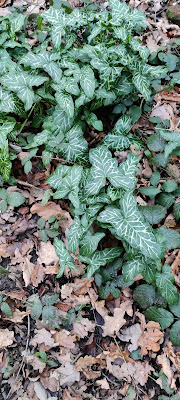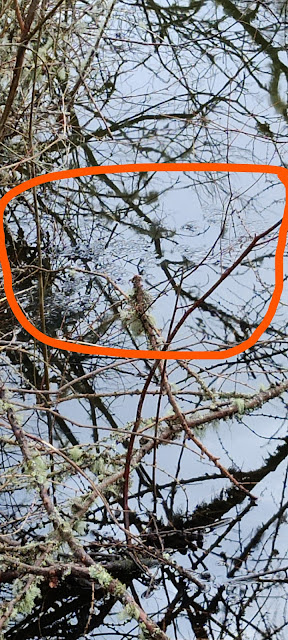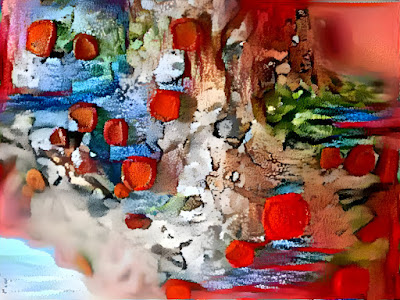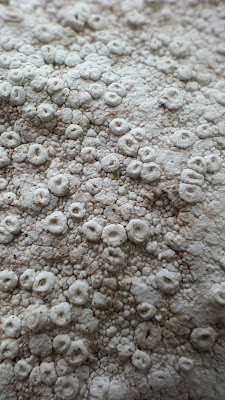Whilst staying with family west of London, the house was opposite Sunbury Park, a green space with ancient trees as it once belonged to an courtier who was gifted it by Elizabeth I. To my surprise (and disappointment) the tree trunks were bare of lichen apart from a new one for me, Flavoparmelia caperata. This is a very common lichen in the UK apart from the North of Scotland.
You can also see some tiny specks of yellow lichen, which is probably Xanthoria parietina, more of which later. The lack of lichens is linked to the air quality and pollution as we were in a highly populated area with plenty of traffic. Some lichens manage to thrive in the extra nitrogen and Xanthoria is one of them. There are more lichens in the park, as there is a booklet available:
I bought a copy at an excellent café and embroidery gallery in the Park. Two more of my pastimes catered for - eating and crafts! Most of the booklet was about fungi, though there were 10 or so lichens mentioned. A poor count when I can find more than that in my garden.
I also did the New Year Plant Hunt and managed to find 11 species flowering. One was a species I had not seen before, Gallant or Shaggy Soldier. These are actually 2 different species Galinsoga parviflora (Gallant Soldier) and Shaggy Soldier (Galinsoga quadriradiata) and I think my specimen was Gallant Soldier as it did not have the glandular hairs of Shaggy Soldier, but I could not be sure as it is a plant I am not familiar with. The plant was introduced at Kew in 1796, having come from Peru. It seems that the name Gallant Soldier is a corruption of the Latin "Galinsoga". You can find lots more about this plant in a blog post at Botany in Scotland here.
The other "foreign" plant I saw was in the park, and there were just leaves, no flowers. But very striking leaves.
With the help of a plant app, it turned out to be Italian Arum or Italian Lords and Ladies (
Arum italicum).Once I got home, I decided to tackle some of the Bird Cherry tree prunings that had been lurking on the picnic table, as I did not want to throw them away until I had looked at the lichens growing on them. So much joy in looking closely at ordinary things!
 |
| Branch from Bird Cherry, with 6 inch ruler for scale. |
You can see a few brown scars where I have already taken off some of the lichens to look at under the microscope. Most of the lichens were familiar to me. There were some Lecanoras, most of which have a white background and "jam tart" fruits:
This one was Lecanora carpinea (now renamed Glaucomaria carpinea) which has a white frosty look (it's called pruina) and the discs turn egg yolk yellow when a drop of bleach is added (C+yellow).
 |
| Glaucomaria carpinea with a drop of bleach |
Another really common one is Lecanora hybocarpa. To ID it you have to take a slice and put it under a microscope with polarising filters to see the crystals glowing.
 |
| Lecanora hybocarpa |
The section shows small crystals along the top which "snow" downwards, and bigger crystals lower down in the green area.
Some of the lichens were easier to ID just by looking, with no special tests needed. This warty one has big apothecia. It's Melanohalea exasperata.
 |
| A rather wet lichen |
There was one tiny yellow lichen that I had not noticed before. Here it is next to
Xanthoria parietina. The bigger yellow lichen at the top is the X. parietina but I was interested in the small one on the bottom twig which is only a few millimetres across. I have spent several days investigating it and I think I know what it is now, but I will check in with some of my lichen friends on Zoom to confirm it. I'll share the details in another post!























































